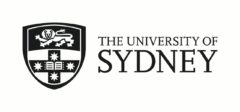Throughout my entire schooling I have only written useless histories. In my junior high school years I would write essays on topics I can’t even recall, using Wikipedia as my key source. In later high school I would aim for objectivity, using primary sources as infallible evidence for claims.
When university came around I continued writing essays. I continued to use Wikipedia – admittedly far less. I still valued my primary sources as ultimate forms of evidence, though used them more critically, more hesitantly. And throughout these nine years the only things I ever produced were useless histories. They were read by my teacher, my lecturer, and occasionally my parents or girlfriend. My volunteer editors feigned interest in the obscure topics that they had no attachment to or care for. My teachers would reward me for my use of sources, but in the end there were curriculum points to mark by, and that’s all they ever looked for.
University is different, right? I’ve heard my lecturers are only paid for fifteen minutes of marking per essay. I have only ever produced useless histories.
Now here one might argue that these essays weren’t entirely useless. Without these essays – and the skills I put to practice in them – how else could I have developed my proficiency as a historian? I owe my critical knowledge of history to these essays. This argument is sound. I agree with it even. However, the point remains: the histories I produced – the histories I laboured over for hours and hours of my schooling years – were useless as histories.
Another argument arises here. One could say I was not ready to produce histories that would make an impact. My history writing was not developed enough to be ‘accurate’, let-alone useful.
I have my hesitations with this argument.
History is currently structured around a hierarchy of worth. Students across this country sit on the lowest rung, writing worthless histories full of spelling errors and Wikipedia quotes still in the original Arial 10.5 font. Slightly above them are the ‘unqualified’ or ‘underqualified’ local historians, who write histories without referencing (sometimes) and without a rigorous process of academic review. Above these local historians is the undergraduate History student who shows promise, but still writes histories for one person: the marker. Then comes the Honours students, and consequently, the PhD students. It is only at the postgraduate level that a historian begins to be recognised – and even then, only by a select few. It is only after years and years of producing useless history that historians begin to make an impact, however small that impact may be.
Wait a second. Doesn’t every profession require you to go through these same motions? This process of producing useless works with the aim of honing your skills is seen in mathematics, where you answer endless questions until one day you start to ask you own. It is seen in science, where you perform experiment after experiment, despite the fact they have been done before, all for the purposes of developing your knowledge and your skills. It is seen in law, where you tackle theoretical and historical case studies, preparing you for what you will face beyond the university’s sandstone walls. Why should history be any different? Why should history value work by historians ‘in training’?
Because history is a social process as much as it is a profession. All people are agents in the construction and interpretation of history. Yes, some are more qualified than others to construct critical and reliable histories. That I do not contest. There is a place for academic history. But there is also a place for history by the people.
The hierarchy of history that determines the worthy from the unworthy is counter-productive. What is needed is an acknowledgement of different forms of history, not different worth. A local history display in a country town theatre has a far greater impact on that community of 7000 people than, say, a thesis on the Decentralisation of Colonial Power in Algeria could ever have on its audience of highly specialised and bickering academics.
Sure, academic history can shape the world. Yet it does so very rarely. If we are to measure worth by academic proficiency, then academic history is the only history worth writing. If, however, we are to measure worth by social impact, then we need to re-evaluate the hierarchy that currently shapes our approach to history.
Now for a good-old ahistorical quote to wrap up this rant. Abraham Lincoln famously called for a “government of the people, by the people, for the people.” It’s interesting to consider the link between history and politics. A good government will hear the voice of the people and be shaped by this voice. A bad government will ignore the voice of the people, view it as useless, and blaze its own destructive path. History needs to listen to the people, not just classify them as useless and unworthy. More than this, it needs to be shaped by the voices of the people. Lincoln shaped a nation when he called for a “government of the people, by the people, for the people.” I wonder what he would think about a history of the people, by the people, for the people.







